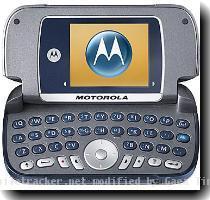Motorola targets 1st quarter of 2011 to separate handset, home units from business services
By Ryan Nakashima, APThursday, February 11, 2010
Motorola says will split in 2 in early 2011
Struggling technology company Motorola Inc. said Thursday it plans to split in two in early 2011 — with one half containing its consumer-focused mobile phone and television set-top box products, and the other holding divisions that target business customers.
The split will give current shareholders a share in each new company, which will be roughly the same size in terms of annual revenue at $11 billion. Both halves will be publicly traded.
The move gives the company’s two co-CEOs, Sanjay Jha and Greg Brown, separate companies to run. Jha will concentrate on Motorola’s entertainment and consumer-oriented devices, including smart phones like the Droid, and Brown on high-tech business solutions.
“We believe this configuration is cleaner and more compelling for customers and investors,” Brown said in an interview. “We do anticipate that both business segments will have positive operating cash flow moving forward.”
The move is a change from plans the company announced in late 2008 to spin off only its handset unit by the third quarter of 2009. It put that plan on hold as the recession deepened and sales deteriorated.
The current separation is planned for the first quarter of 2011.
Motorola, based in Schaumburg, Ill., rode high for a few years after introducing the wildly popular Razr flip phone in 2005, but as the phone’s popularity faltered, the company struggled to develop a worthy successor and losses piled up in its cell-phone division.
Two newer phones based on Google Inc.’s Android operating system, the Cliq and the Droid, have been well received, and Motorola said it shipped 2 million units in the fourth quarter. Motorola’s Android-based Devour will go on sale in March through Verizon Wireless.
Motorola plans to launch 20 smart phones this year alone.
Jha suggested that smart phones will be increasingly wedded to television set-top boxes as video is watched on multiple devices. He added that Motorola’s mobile-device business will be profitable in the fourth quarter of this year.
“Together, mobile devices and (the) home (business) is uniquely positioned to be a leader in the largest opportunity in technology today, the convergence of mobility, media, and the Internet,” Jha said.
Brown, the company’s other co-CEO, will head what’s left of the company, made up of the enterprise mobility and networks businesses. The enterprise mobility division makes such products as handheld devices for warehouse workers and bar-code scanners.
The networks business consists of helping build out cell phone towers and setting up fiber-optic cable lines to enable the spread of high-speed Internet connections.
Earlier, the company said that if the spinoff of the handset unit did not happen before Oct. 31, 2010, Jha would get $30 million in cash. Jha said Thursday he had extended his contract until June 2011 and so won’t qualify for that payment.
About $3 billion in public debt will reside in Brown’s half, and Motorola expects it to get an investment-grade rating of “BBB” by Standard & Poor’s and Fitch’s rating system.
The executives did not make clear how much debt will exist on Jha’s side.
Analyst Douglas Christopher with Crowell, Weeden & Co. in Los Angeles said the split made sense.
“They both gain focus on their core businesses,” he said. “I’ve always believed that every company should have one CEO.”
Both halves of the company will continue to use the Motorola brand, with the mobile device side owning it and licensing it royalty-free to the other.
Investors appeared to welcome the news.
Motorola’s shares were up 17 cents, or 2.6 percent, at $6.82 in after-hours trading following the announcement. They earlier added 2 cents to close the regular session at $6.65.

